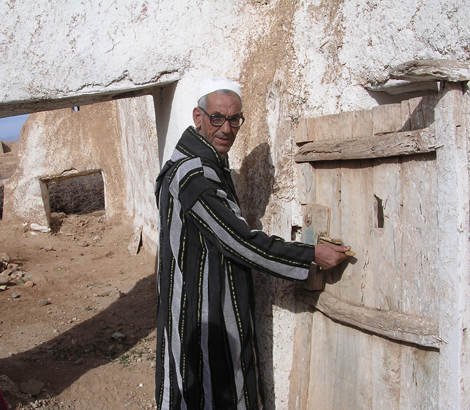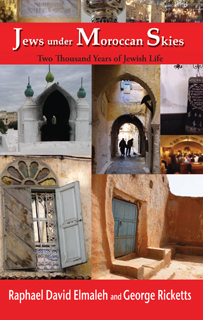Jews under Moroccan Skies
Two Thousand Years of Jewish Life
Raphael David Elmaleh and George Ricketts
Sample Reading
Jews under Moroccan Skies
Two Thousand Years of Jewish Life
Raphael David Elmaleh and George Ricketts
At a distance of twenty-eight kilometers from Taroudant lies the village of Khemis Arazane. Here the former Jewish community appears to have been more independent, seeing that there is no kasbah in the vicinity. However, the village is situated on one of the ancient caravan routes that came up from Tata in the south and continued westward to Taroudant. It was a twist of fate that the ancient synagogue in Arazane came to light at all.
Anxious to find and preserve as much as possible of Morocco’s Jewish heritage, the Foundation for the History and Culture of Moroccan Jews, based at the Jewish Museum in Casablanca, sent the author, Raphael Elmaleh, to scout the villages in the south of the country to see what remained of their former Jewish inhabitants.
When he came to Khemis Arazane, he interviewed local Berber Muslims on whether there was anything remaining of the former Jewish community. Documented evidence confirms that Jews had lived in the village and the site had been in existence for more than 850 years. Other evidence demonstrates that many settlements along the caravan routes were first established by Berber Jews.
Some local men escorted him to the home of a local elder named Harim, who, on discovering the reason for coming to the village, asked why he had taken forty-three years to show up.
Harim then produced a large wooden key, a length of wood with pegs very similar to those used in the Middle East many hundreds of years before. The lock, too, is made of wood. According to Harim, who was seventeen-years-old at the time, he was given the key by the last Jew to leave the village for Israel during the 1960s. The Jew told him to give the key to any Jew who happened to turn up.
The slat, the Berber Jews never used the word synagogue, was built with packed mud, called pisé, and had in recent years been used for storing hay. Removal of the hay revealed the Ark with the original wooden doors decorated in typical Berber style. There was great excitement when Hebrew script was also found written on the interior walls. The roof was in need of repair and the mikvi filled with dried mud and sludge, but, fortunately, the interior and outer walls were quite sound. The building was subsequently restored.
Harim, a Muslim, is now the guardian of the building and responsible for keeping an eye out for any signs of damage by the torrential rains that fall each rainy season. It is clear from the way he talks that he feels it a great honor to be in such a position. With his knowledge Harim could be considered as an unofficial historian of the Khemis Arazane’s Jewish past. By the way, Khemis means Thursday in Arabic. The tag was added to the village name because the local market or souk always took place every Thursday. The Jews never worked on a Saturday, consequently, until fairly recently, there were no towns or villages with the tag Sebt, which means seven or the seventh day.

Harim, the synagogue keeper in Khemis Arazane,
opening the door of the abandoned synagogue of the town.
Photo courtesy of Yehuda and Nurit Patt.
Copyrighted text and image.
Can only be used with written permission from Gaon Books.

